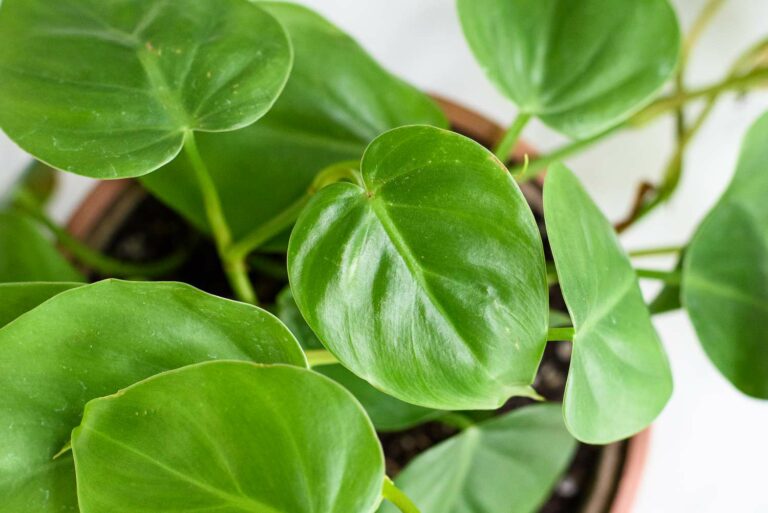If you’re seeking a touch of nature’s magic to liven up your living space, look no further than the captivating Philodendron (Philodendron spp.). With its lush foliage and mesmerizing beauty, this plant has become a beloved member of many households. Derived from the Greek words “philo” (meaning love) and “dendron” (meaning tree), the Philodendron boasts an elegant botanical name that perfectly suits its charm.
Hailing from the tropical regions of Central and South America, its origins are as exotic as its appearance. Its glossy, heart-shaped leaves cascade in abundance, creating a striking visual display that’s hard to resist. Fear not, caring for this delightful green companion is surprisingly easy, making it a perfect choice for both seasoned plant enthusiasts and budding gardeners alike.
Common Philodendron varieties:
- Philodendron Hederaceum
- Philodendron Rugosum
- Philodendron Micans
- Philodendron Bipinnatifidum
- Philodendron Xanadu
- Philodendron Erubescens
- Philodendron Brasil
Care
If we have to highlight just two things for you: plenty of partial sunlight and just enough humidity. Philodendrons are relatively low-maintenance plants, but of course, you need to pay attention to some things.
- Water: To determine the perfect watering frequency, wait until the top inch of soil is dry, as overwatering or underwatering can cause leaf drooping and root rot. Weekly watering is usually enough.
- Soil: For healthy growth, Philodendrons thrive in loose, acidic, well-draining soil rich in organic matter, requiring periodic soil replacement and flushing to prevent salt accumulation that may lead to leaf discoloration.
- Temperature: Philodendrons have varying temperature tolerances depending on the species, but it’s generally recommended to avoid temperatures below 55 degrees Fahrenheit and protect them from cool drafts indoors, like those from air-conditioning vents.
- Light: Philodendrons thrive in partial sunlight, requiring bright indirect light indoors to avoid leggy growth or excessive yellowing of leaves.
If you are looking for low-maintenance, beautiful plants, you should also check out the Dahlias, and ZZ plants too.
Propagation
The most common methods of propagating Philodendrons include stem cuttings, air layering, and division. Stem cuttings involve taking a section of the stem with at least one node and rooting it in water or soil. Air layering entails encouraging roots to form on a section of the stem while it is still attached to the parent plant. Division involves separating the plant into smaller sections, each with its own root system.
Common Pests
Pruning
Taking care of your philodendron plant means giving it a little trim now and then. Pruning is like a spa day for your plant—it keeps it healthy, prevents diseases, and helps it grow beautifully. Here are some friendly tips to help you prune your philodendron:
- Schedule the pruning in the spring or early summer when your plant is at its busiest.
- Say goodbye to any sad, droopy leaves, as well as ones that are damaged or sickly.
- Give those long, lanky stems a snip to encourage fresh new growth.
- If you want your plant to have a certain shape, trim it accordingly. Just remember, moderation is key!
- Be a good barber and use clean, sharp scissors or shears for the job.
Follow these tips, and your philodendron will thank you with lush, vibrant foliage and a happy disposition!
Frequently Asked Questions
Yes, Philodendron is an excellent indoor plant! They do not require a lot of maintenance, just water them weekly, and put them in a window where they get enough non-direct sunlight.
Does philodendron need full sun?
Philodendrons thrive in partial sunlight, requiring bright indirect light indoors to avoid leggy growth or excessive yellowing of leaves.
How long do philodendrons live?
Philodendrons can live up to 30 years if they are taken care of properly. Water them weekly and ensure they get enough filtered sunlight.
Is philodendron toxic or not?
Philodendron is toxic to pets and humans as they contain calcium oxalate crystals.
Do philodendrons like to stay wet?
Philodendrons like moisture but do not like to sit in water. Water them only once a week.


